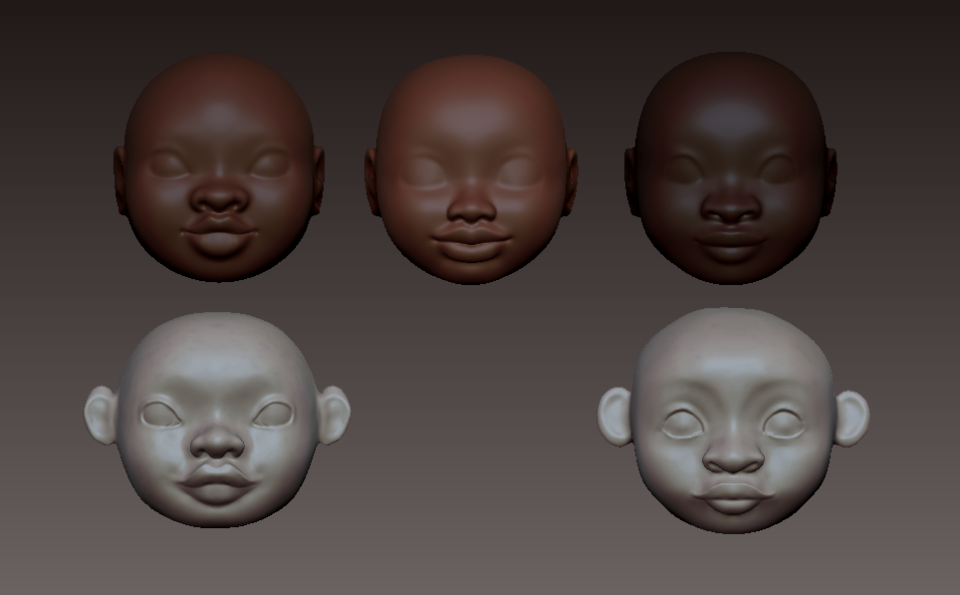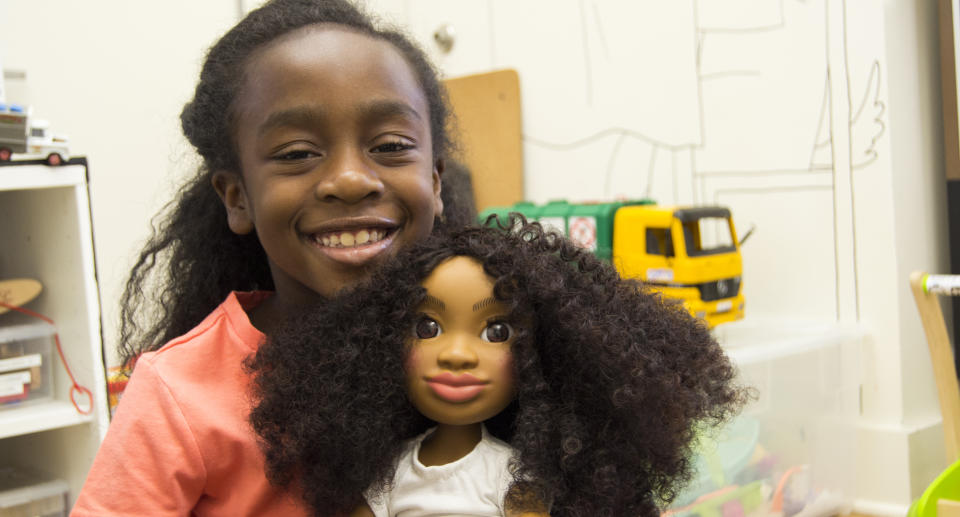Why it’s important for young black girls to see dolls that look like them

Thanks to actresses such as Yara Shahidi and Amandla Stenberg, seeing young women of color on the small and big screen is more common than it used to be. When it comes to diversity in the toy world, though, there is a way to go.
Growing up frustrated about the lack of diverse dolls she saw on store shelves, founder and creative director of Healthy Roots Dolls, Yelitsa Jean-Charles, decided to help fill this void.
Reflecting on her own experience, the 23-year-old shared with Yahoo Lifestyle that she has had to deal with her own issues related to internalized racism, which helped inspired her to create Healthy Roots Dolls. “I remember once, I went to Florida and when I got back, my family didn’t ask for pictures or about my trip to Disney,” she shares with Yahoo Lifestyle. “They turned to my mother and said, ‘Why did you let her get so dark?’ It was the way they said it that made me start to think that there was something wrong with having dark skin.” As a result of occurrences like this, Jean-Charles admits that she actively began to reject anything associated with her “blackness.”
“It wasn’t until college that I started to unpack these issues, put the flat iron down, learned to do my own hair, and stopped seeking validation from those who upheld mainstream Eurocentric standards of beauty,” Jean-Charles says. “I didn’t learn to do my own hair until I was 20.”

“It took over six months of trial and error from sketch to clay sculpt, and then iteration after iteration of 3D renderings,” Jean-Charles says of the early stages of creating her dolls. “We then printed the 3D renderings to get a feel for how the actual doll will look and then have working prototypes made for a more finished look.”
The first of four dolls was named Zoe, and the next three were Gaiana, Dara, and Marinda. Each of the dolls has a different skin tone, facial features, and hair texture, with the aim of representing the full range of African ancestry. “I want kids of color to be excited about the different cultures of the African diaspora.”
Entering the world of toys was a smart and influential move. In the 1940s’ Kenneth and Mamie Clark doll experiment, children between the ages of 3 and 7 were asked to select the doll they preferred. Nearly all of the participants were attracted to white dolls and associated them with positive characteristics. Similar studies since have had similar findings.
In a 2009 study, Professor Sam Pierstorff of Modesto Junior College surveyed young children on dolls representing different ethnic groups. Only one child selected the doll with the darkest skin as pretty.
Along with the Healthy Roots team, Jean-Charles recently did her own research to see how many dolls could be found at a local toy store. A Twitter post sharing this experience revealed that only 22 dolls of color were found, out of 300 in the entire store, and commented, “This is why #representationmatters. Black girls deserve dolls too!”
When the Healthy Roots team visited a local toy store, we only found 22 dolls of color out of 300 dolls in the entire store! This is why #representationmatters. Black girls deserve dolls too! That's why we created Healthy Roots. To order your doll visit: https://t.co/KPuzhGbIKd pic.twitter.com/yilTDm8EKE
— Healthy Roots Dolls (@RootsDolls) November 8, 2017
Young girls of color have been very receptive to and appreciative of Jean-Charles’ efforts, and are obsessed with Healthy Roots Dolls. “Little girls have been known to snatch the dolls right out of my hands at photo shoots, because they are just so excited,” she says. “I’ll never forget how one little girl’s eyes lit up as she said, ‘Wow. She looks just like me.’ Those are the moments I live for.”

Jean-Charles is an Ohio-based graphic designer with a BFA in illustration and a concentration in gender, race, and sexuality from the Rhode Island School of Design. She has no plans to slow down and is passionate about changing the narrative, saying she believes “seeing is believing.”
“If I could play and interact with a doll whose hair looks likes mine, I would not have had insecurities about my appearance,” Jean-Charles says. “Self-esteem has a huge effect on the actions kids take, and understanding that different hair is enough should be embraced, not diminished. No one should feel less than, because of the kink of their curl or the color of their skin. We are all beautiful.”
Read more from Yahoo Lifestyle:
Video of son combing his mother’s hair is the sweetest thing you’ll see all day
This video of a 4-year-old girl cutting her own bangs will make you cringe
This Winnie Harlow-inspired doll with vitiligo is taking over social media
Follow us on Instagram, Facebook, and Twitter for nonstop inspiration delivered fresh to your feed, every day.
